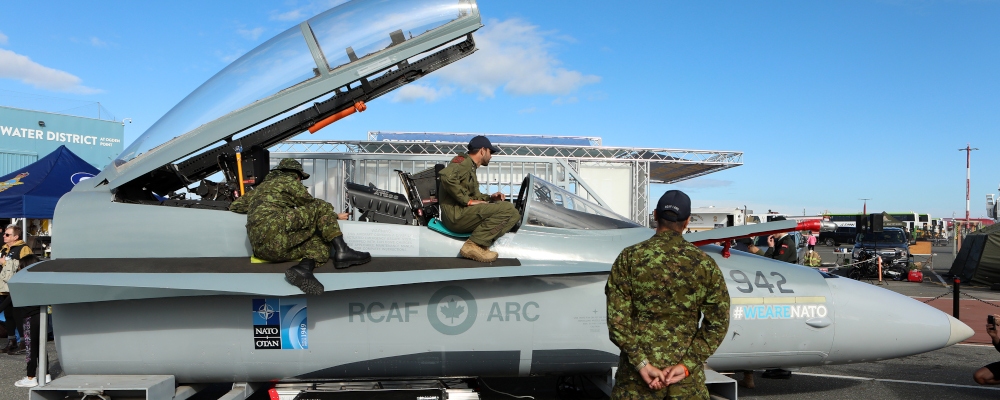Looking back, one of the most difficult periods for the Canadian Armed Forces in recent history was the late 1970s and early ’80s. Successive governments had cut into the military’s budget, downsizing and reorienting the forces while also delaying modernization. By the 1980s the CF faced obsolescence in the face of significant advances by Warsaw Pact forces.
But while downsizing had cut the military’s standing forces, it still retained a capable administrative system with enough institutional memory to execute the new programs. By 1990, the military had replaced a number of its key systems with platforms (like the CF-18, CP-140, and the Leopard 1) with other major ones, like the Halifax Class frigates and the North West Warning system that was on the cusp of delivery.
On the surface, Canada today looks like it is in a similar situation to the 1980s, and may even seem to be on the same trajectory if 2017’s Strong Secure, Engaged is executed as envisaged. Unfortunately, looks are deceiving. The reality is far worse now than it was then.
Many of the same systems we acquired in the 1980s are now far beyond their rust-out date and are not anticipated to be replaced for another decade or more due to failing program execution. While defence spending has increased over the past eight years, much of it has gone to operational accounts due to growing international commitments. This has masked the growing dilapidated state of the military’s capital base.
In other words, our system of procurement is fundamentally broken. Deliveries of major capabilities can now be counted in decades where years should be the norm. The Remotely Piloted Air System (RPAS) program, which will deliver a medium-altitude unmanned aerial vehicle, is about to enter its 17th year of existence without delivering a platform. By comparison, many of our allies, such as the U.K., Germany, and France have brought equivalent systems into service in under four years.
These failures have occurred at an inopportune moment, as the international security environment has deteriorated rapidly in the wake of Russia’s invasion of Ukraine and China’s destabilizing efforts in the Indo-Pacific. Our allies have increased spending and launched broad modernization of their forces, whereas Canada’s efforts have largely stalled by comparison.
The system of acquisition is fundamentally misaligned from the focus of delivering critical defence goods to our soldiers. Over the past four decades the system has become progressively slower and less able to meet our national defence needs due to several factors. First has been the increase in non-defence objectives in procurement, most notably delivering economic and social benefits to Canadian society through these purchases. Second, a number of perceived failures, such as the initial cancellation of the F-35 acquisition in 2012, resulted in ill-considered reforms. It added layer upon layer of unnecessary processes, diluting individual accountability, and increasing costs and delays in programs.
While our present situation is suboptimal, the real cause for concern is the CAF of the future (which in reality, is already here). Reflecting the rapid and fundamental evolutions our societies are experiencing due to the confluence of new technologies, warfare is undergoing a similar shift. What I outlined earlier reflects a 20th-century approach to war fighting and procurement. Canada must move into the 21st century.
A core consideration is the information dominance strategy. In the United States this exists under the Joint All-Domain Command and Control approach, or JADC2. Simply put, this doctrine seeks to aggregate and integrate information from all available sensors, then analyze and disseminate it to units that can affect action. Canada’s major allies, including Australia, Germany, and the U.K. are implementing similar approaches and have already drastically affected force structures and doctrines among all of their services. On a granular level, a platform’s connectivity and integration to existing networks and command and control systems are often as important as its physical attributes.
Canada has not adjusted to this new reality. While Strong, Secure, Engaged did contain verbiage that acknowledged joint intelligence surveillance and reconnaissance’s utility for the battlefield, the Canadian Armed Forces has lagged far behind its allies in this area. For example, when we look at RPAS, the misalignment of focus is clear. The procurement was largely focused on its physical capabilities while minimal consideration was given to how the platform would play in a broader networked environment. It would be akin to buying a top-of-the-line smartphone and only using it to make phone calls.

In many ways this shift, when it comes, will be a fundamental one for the department and the government. Its implications will be profound and widespread, affecting not only military operations but how we procure systems. For some systems, such as software-enabled capabilities, how we develop them will directly affect their military utility. It requires procurement approaches that are flexible and innovative, delivering capabilities rapidly to our soldiers in order to face unanticipated new threats.
If there is one point to start, we need to develop a strategy and doctrine that clearly identifies the importance of this emerging revolution in warfare. While, ideally, this should have occurred in the Defence Policy Update, even some level of guidance would be a start. By identifying these first principles, the military, the Department of National Defence, and the government as a whole can start the process of aligning its thinking around this problem. That is the crucial initial step that must be taken before further reforms can follow.
The 21st-century battlefield is already here. It’s time our leaders seriously engaged with what that means. We must enable the military to field the systems it needs to operate and succeed there. Nothing less than our security and global standing are at stake.
This article was adapted from remarks given as testimony before the Standing Committee on National Defence. A recording of the remarks can be viewed here.




